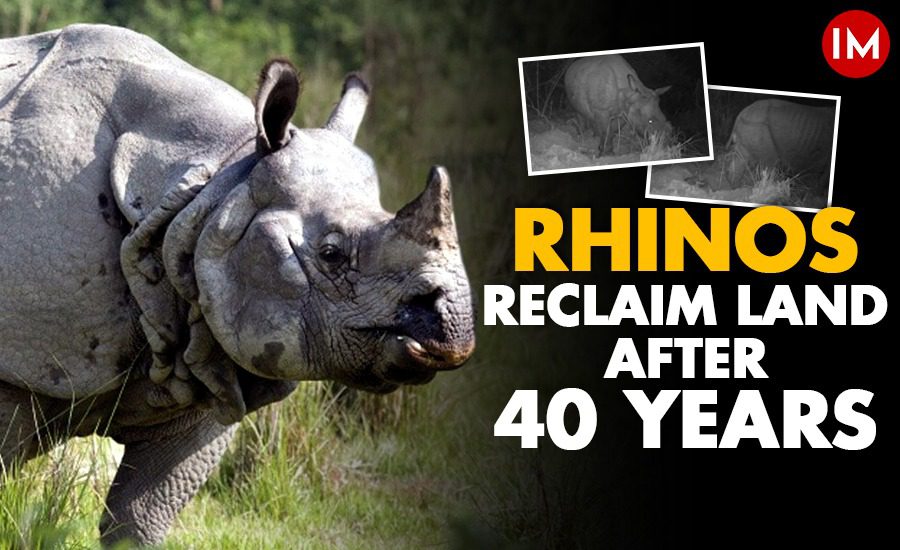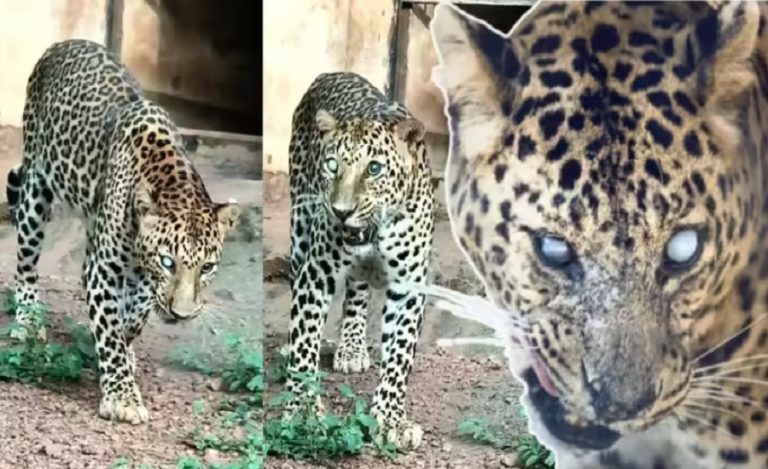Till few months back, the Burachapori landscape in Assam was dotted with tiny tin houses where families lived. The menfolk went about their routine work while the women kept themselves busy with their children and household chores. Some of the men even tilled small patches of land and grew vegetables which fetched them a good price in the local markets. Everything looked fine on the surface, except that this land falls in the Protected Area of Kaziranga National Park.
So, in February 2023, when the forest department removed the encroachers – some by mutual consent, some by force – naturally, there was an uproar. But, now, the reclaim of the land by Kaziranga authorities for their animals seems to have been in good faith as large mammals have returned to their old homeland that had been taken over by humans.
Two rhinos and 10 tigers have been sighted in camera traps in this area. Assam Chief Minister tweeted his happiness at this development in the beginning of the new year. Speaking to Indian Masterminds, Kaziranga’s first woman Field Director Dr. Sonali Ghosh, an IFS officer of 2020 batch, gave more details about this good news.
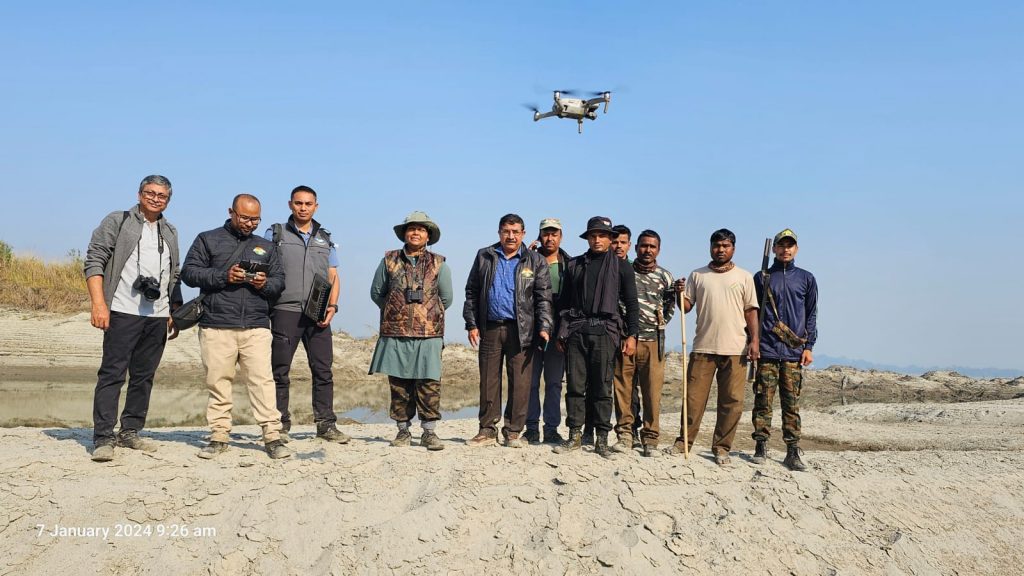
RHINO RETURNS
Since November 2023, rhinos are now being sighted in the 1st Addition of Burachapori WLS and Laokhowa WLS respectively. Two rhinos have likely entered the PA through the 2nd Addition of Orang National Park and through the recently restored (evicted areas) of Arimari. The eviction drive was carried out on 13, 14, and 15 Feb, 2023, which led to a clearing of 1282 Ha. of forest land and 817 Ha. of unsurveyed government land.
Laokhowa-Burachapori complex in Nagaon district had until 1983 a population of 45-50 rhinos. They were poached out and after that there was degradation of grassland habitat due to anthropogenic pressure. Stray rhinos from the north bank (Orang National Park) and eastern side (Kaziranga) were known to enter through the Brahmaputra chapori areas but never stayed for long.
“Laokhowa-Burachapori Wildlife Sanctuary and the 1st addition to Burachapori WLS – a total of 309.20 sq km – is a part of the Greater Kaziranga landscape. We have witnessed the return of 2 rhinos to this landscape after almost a gap of 40 years,” Dr. Sonali Ghosh explained.
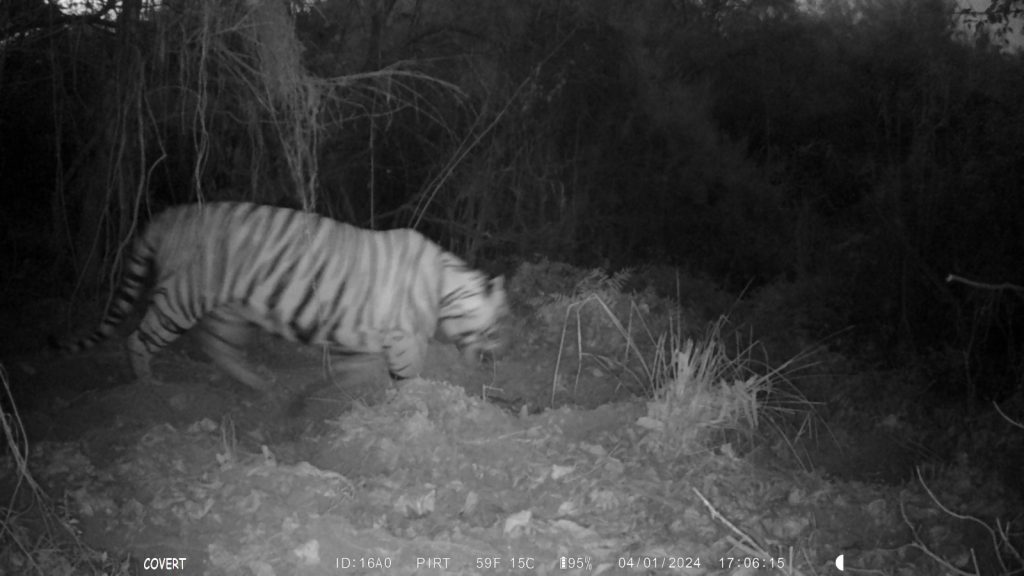
TIGER TOO
Other than rhinos, the Protected Area (PA) also has a record of 10 tigers, indicating a good prey base of herbivores. It is also one of the few PAs in the country to have an excellent habitat of freshwater mangroves. Species like Hijal, a Barringtonia species, which is rare and are found in few PAs grow abundantly here.
That tigers have started living in the freshwater mangroves area is a good sign, giving hopes of their adaptation, as is the case with the Sunderbans tigers. It will now rest on the shoulders of the Kaziranga soldiers to ensure these tigers’ protection.
“The government has sent in new recruits and filled in vacancies. And, 75 frontline positions like Deputy Ranger, Forester and Forest Guard have been posted in the PA,” Dr. Ghosh informed.
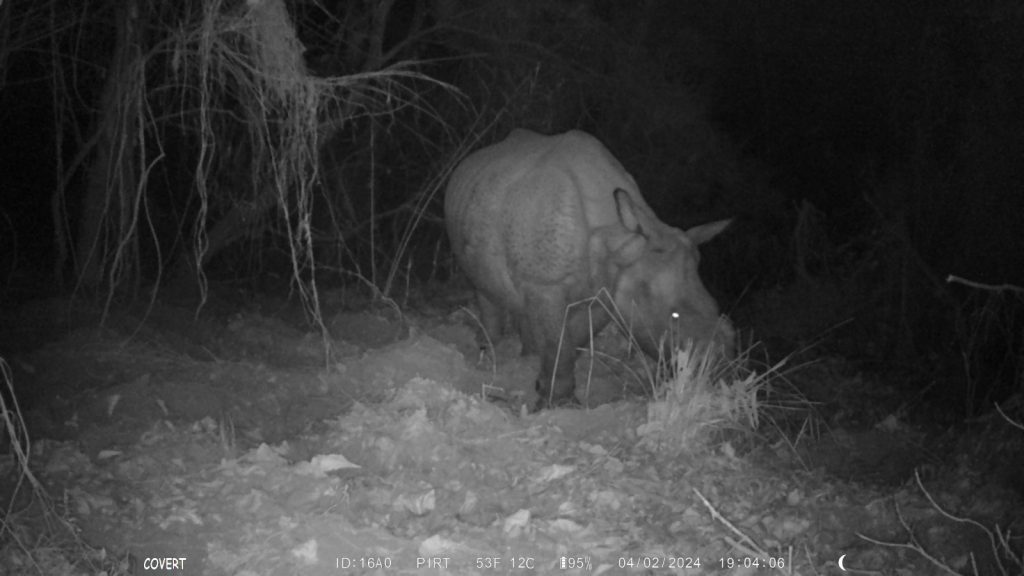
FUTURE PLANS
She also added that the government is committed to strengthening the landscape and restoring the lost glory of this historic Protected Area and ensure habitat connectivity between the rhino range of Orang- Laokhowa-Burachapori-Kaziranga landscapes.
“Just yesterday, a team comprising of the Rhino Re-introduction Committee members went to the area where there has been proven evidence of the rhino, which was camera trap. And, now there is a plan to take up strategic interventions, especially for the protection and management of the landscape, so that the rhinos which had naturally come there, most likely from Orang, can stay and also have long term habitat in that landscape,” said Dr. Ghosh, summing up the future course of action.
It is heartening to see large mammals returning to their old homeland after a big gap. As Dr. Ghosh said, this has been possible because of the habitat restoration and the active support and collaboration of the Park authorities and, also, the local people. After restoration and the subsequent return, the onus will now lie on the forest department to ensure protection and preservation of the large mammals in their reclaimed habitat.

